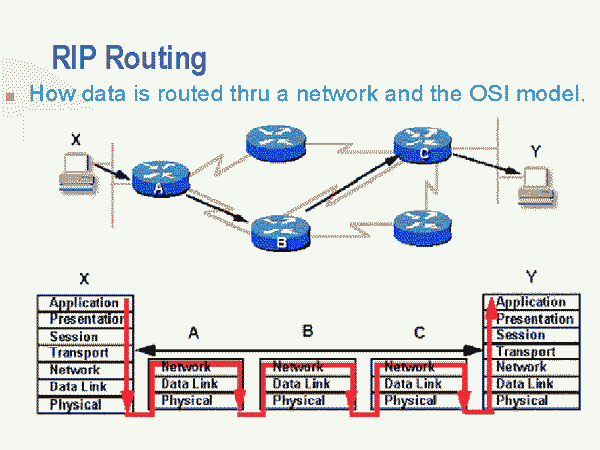Routing Information Protocol
1:What port does RIP use?
* RIP uses UDP port 520.
2:What metric does RIP use? How is the metric used to indicate an
unreachable network?
* RIP uses a hop count metric. An unreachable network is indicated by setting
the hop count to 16, which RIP interprets as an infinite distance.
3:What is the update period for RIP?
* RIP sends periodic updates every 30 seconds minus a small random variable to
prevent the updates of neighboring routers from becoming synchronized.
4:How many updates must be missed before a route entry will be marked
as unreachable?
* A route entry is marked as unreachable if six updates are missed.
5:What is the purpose of the garbage collection timer?
* The garbage collection timer, or flush timer, is set when a route is declared
unreachable. When the timer expires, the route is flushed from the route table.
This process allows an unreachable route to remain in the routing table long
enough for neighbors to be notified of its status


hi all, how i can see he entire toics bcoz it shows incomplete.....kindly help in this regard